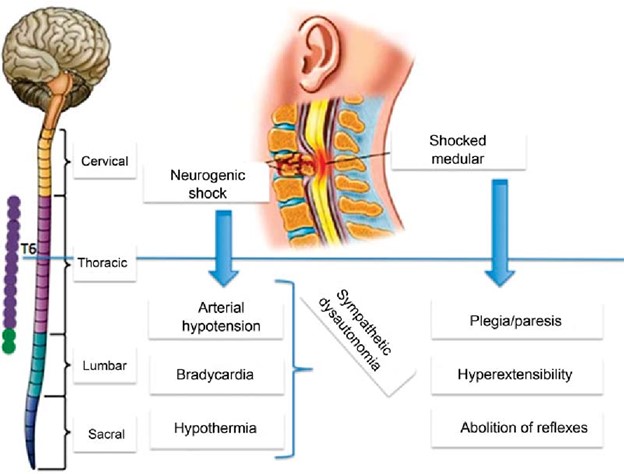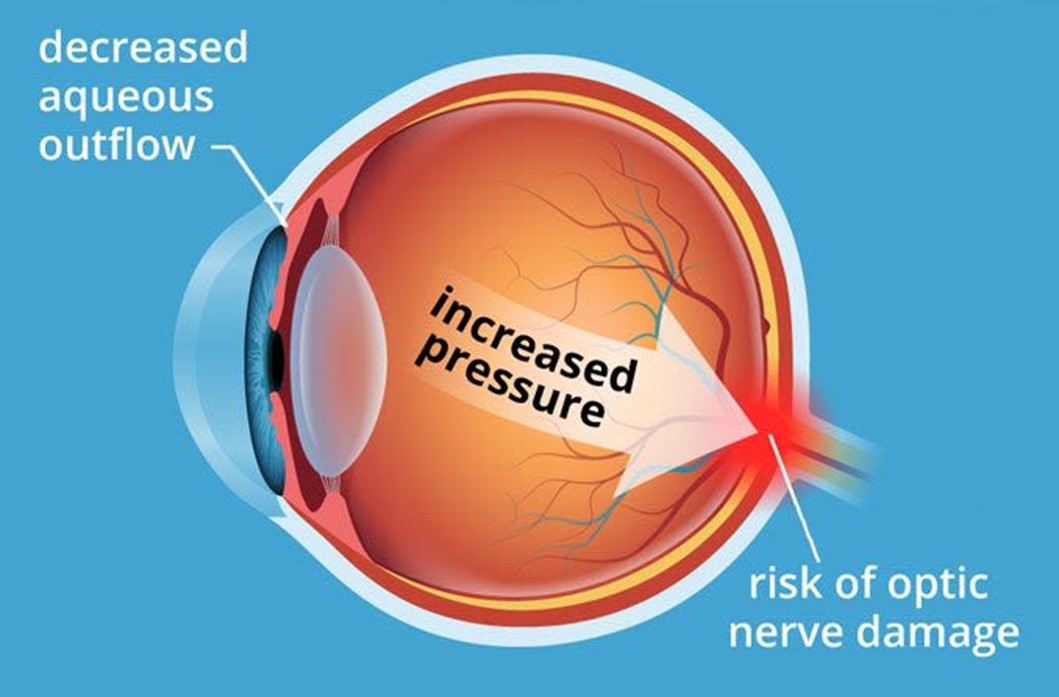A client arrives to the emergency department after falling from a ladder. The client has a loss of sensation and flaccid paralysis. Which of the following complications of an acute spinal cord injury does the nurse suspect?
Hemorrhage
Spinal shock
Apoptosis
Neurogenic shock
The Correct Answer is B
Choice A Reason: Hemorrhage is not a complication of an acute spinal cord injury, but rather a possible cause of it. Hemorrhage can occur due to trauma or rupture of blood vessels in or around the spinal cord, leading to compression and damage of the nerve tissue.
Choice B Reason: This is the correct choice. Spinal shock is a complication of an acute spinal cord injury that occurs within minutes to hours after the injury. It is characterized by loss of sensation, motor function, reflexes, and autonomic function below the level of injury. It is caused by transient disruption of nerve conduction and synaptic transmission in the spinal cord.
Choice C Reason: Apoptosis is not a complication of an acute spinal cord injury, but rather a cellular process that occurs after it. Apoptosis is programmed cell death that occurs in response to injury or stress. It can lead to further loss of neurons and glial cells in the spinal cord over time.
Choice D Reason: Neurogenic shock is a complication of an acute spinal cord injury that occurs within hours to days after the injury. It is characterized by hypotension, bradycardia, and peripheral vasodilation due to loss of sympathetic tone and unopposed parasympathetic activity. It is caused by disruption of autonomic pathways in the spinal cord.

Nursing Test Bank
Naxlex Comprehensive Predictor Exams
Related Questions
Correct Answer is D
Explanation
Choice A reason: This is incorrect because this comment does not require reporting to the client's provider. It is normal to have reduced vision and an increased risk of falling with a patch on one eye after cataract surgery. The nurse should reassure the client, provide assistance with mobility, and educate the client on safety measures.
Choice B reason: This is incorrect because this comment does not require reporting to the client's provider. It is normal to have some itching and discomfort in the eye after cataract surgery. The nurse should commend the client for not rubbing the eye, as this can cause infection or damage to the surgical site. The nurse should also administer anti-inflammatory eye drops as prescribed and instruct the client on how to apply them.
Choice C reason: This is incorrect because this comment does not require reporting to the client's provider. It is normal to have increased sensitivity to light in the eye after cataract surgery. The nurse should dim the lights in the room, provide sunglasses or a shield for the eye, and educate the client on how to protect the eye from bright light.
Choice D reason: This is the correct answer because this comment requires reporting to the client's provider. Severe pain in the eye after cataract surgery can indicate a complication such as infection, inflammation, bleeding, or increased intraocular pressure. The nurse should assess the eye for signs of redness, swelling, discharge, or bleeding, and report the findings and the pain level to the provider. The nurse should also administer analgesics as prescribed and monitor the pain relief.

Correct Answer is B
Explanation
Choice A Reason: A virus is not detected by the KOH test, which is used to diagnose fungal infections of the skin, hair, or nails. A virus can be detected by other tests, such as polymerase chain reaction (PCR) or viral culture.
Choice B Reason: A fungal infection is detected by the KOH test, which dissolves the skin cells and leaves behind the fungal elements that can be seen under a microscope. A fungal infection can cause symptoms such as itching, scaling, redness, or blisters.
Choice C Reason: A bacterial infection is not detected by the KOH test, which is specific for fungi. A bacterial infection can be detected by other tests, such as gram stain or culture.
Choice D Reason: Cancer is not detected by the KOH test, which is not a screening tool for malignancy. Cancer can be detected by other tests, such as biopsy or imaging.
Whether you are a student looking to ace your exams or a practicing nurse seeking to enhance your expertise , our nursing education contents will empower you with the confidence and competence to make a difference in the lives of patients and become a respected leader in the healthcare field.
Visit Naxlex, invest in your future and unlock endless possibilities with our unparalleled nursing education contents today
Report Wrong Answer on the Current Question
Do you disagree with the answer? If yes, what is your expected answer? Explain.
Kindly be descriptive with the issue you are facing.
